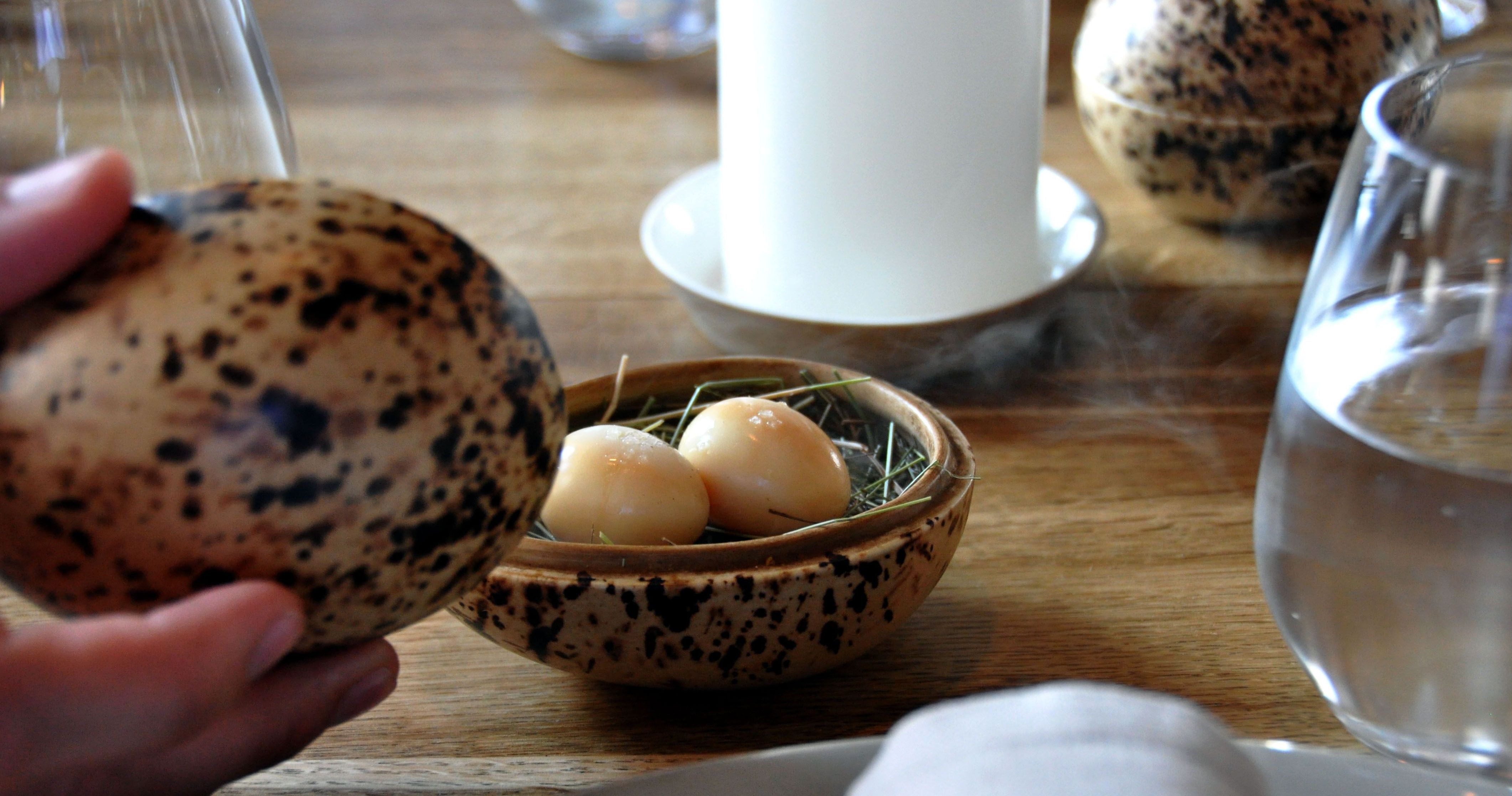Noma, in Copenhagen, has just been awarded first place in the World’s 50 Best Restaurant awards. We explore exactly why Noma is now regarded as the number one place to dine on the planet and the driving ethos behind this most innovative of eateries.
‘New Nordic’ Cuisine
Noma has long been emblematic of the ‘New Nordic’ cuisine, which is designed to epitomize the authentic cuisine of the country and is focused on fresh, seasonal food, grown, foraged, or reared as locally as possible. Marinating, salting, and smoking - traditional Nordic food preparation techniques - are incorporated where possible, too, and a general respect for nature and the environment, both local and global, is a key concern of the movement.
Noma encapsulates the essence of the ‘New Nordic’ cuisine perfectly, with chef and co-owner Rene Redzepi renowned for his techniques in both foraging and fermentation and the restaurant’s gardens providing many of the ingredients for his creations.
The Ambiance
Before the menus even arrive or a morsel has passed your lips, you know you’ve arrived somewhere very special. The lantern-lit walk through the gardens to the Noma building is magical and sets the scene for an evening of unexpected delights.
Inside the restaurant itself, the decor is warm and rich, promoting a cozy atmosphere; light wood wall paneling, unvarnished wood tables, and sleekly cushioned restaurant chairs add to the relaxed-yet-chic vibe. The fresh, verdant foliage hanging from the high rafters lends, too, an air of open-aired freshness, perfect for the ‘just-picked nature of the food about to be served.
The Food
If you’re here at the ‘world’s best restaurant’, then you’re going to be expecting something pretty stratospheric when it comes to the food. Seasonality, locality, and sustainability are the holy trinity of the Noma ethic, and this is borne out by every single dish that comes out of its kitchens to the waiting diners.
Mid-September to mid-December is Game and Forest Season, and the menu reflects the abundance of the woods and fields in the Fall. Mushrooms, berries, and meat feature heavily, as well as the preserved greens and flowers that have been foraged during the Summer months.
Ocean Season runs from Mid-January to Mid-May, when diners can expect to enjoy a range of delicacies from the seas around Scandinavia, following which the menu will reflect Vegetable Season. The menus can be challenging: raw scallops, insects, and reindeer brains have all featured in the dishes that form the wide-ranging tasting menu. Playfulness and creativity in the presentation of the food, and how it needs to be eaten, is very much in evidence, adding to the sense that a trip to Noma is an experience, rather than just an opportunity to dine out in style. Broth is sipped through seaweed; what seems to be a thin, crisp layer of chocolate forming part of dessert turns out to be roasted cod skin, eggs are served, shell on, in a nest on a bed of straw. It’s safe to say that Noma is not for the culinary faint-hearted.
The Kitchen
Behind the scenes at Noma is just as wondrous as the front of house. Noma’s chef, Rene Redzepi, and his team forage food throughout the year in an ongoing quest to bring diners the most unique, regionally sourced dishes imaginable. These foraged items and the produce supplied by the restaurant’s gardens are brought back to Noma’s state-of-the-art kitchen, which features dedicated fermentation facilities.
Noma’s kitchens operate with a mix of military precision and the sense of being in a bustling art studio where truly great works are being created. If you’re lucky, you may even be offered a tour after your meal.
What’s Next For Noma?
Having long been at the forefront of the ‘New Nordic movement in cuisine - which made the origins of food an essential component when thinking about its eating - Noma’s philosophy has had wide-reaching implications.
A concern for the local and global environment, sustainability, and a shift towards an awareness of how food has arrived on our plates has gained such traction that it’s now become both standard and expected for restaurants worldwide to reflect these things, to some extent, in their menus.
With its recent win and the spotlight once again on this most celebrated of eateries, Noma will no doubt continue pushing boundaries and experimenting with ingredients in a bid to keep faith with its founding ethos. Diners can expect to see insects featuring more heavily in menus, in line with the fact that they are widely believed to be a much more sustainable food choice than meat. There will continue to be a focus on seasonal produce, and this will likely be narrowed down even further: instead of three yearly menus to reflect the changing seasons, there may be six, or more, so that only the very freshest and most readily available food is utilized in the restaurants’ dishes.
Whatever innovations that Noma make, as they head into what will no doubt be a spectacular future, they are sure to be as thought-provoking as they are exquisitely delicious.

